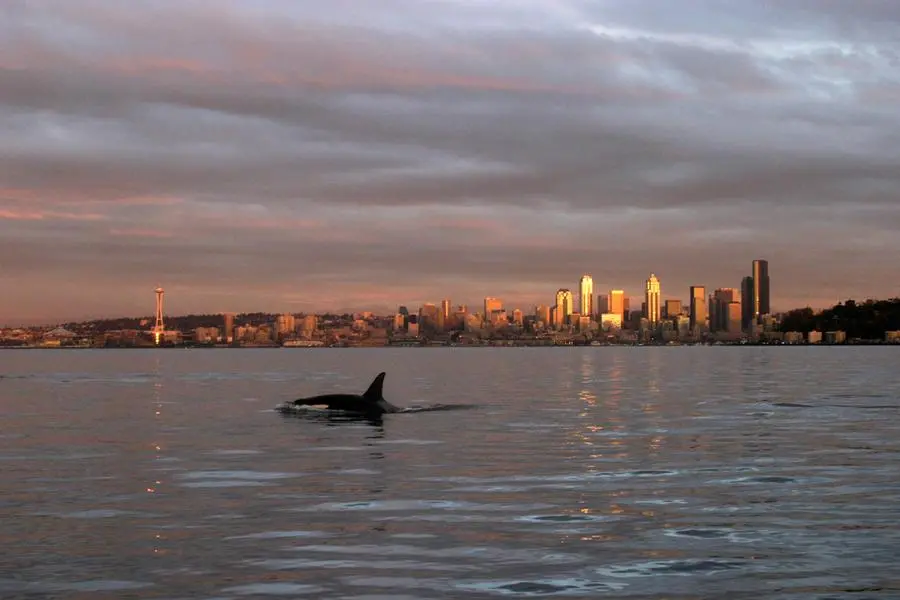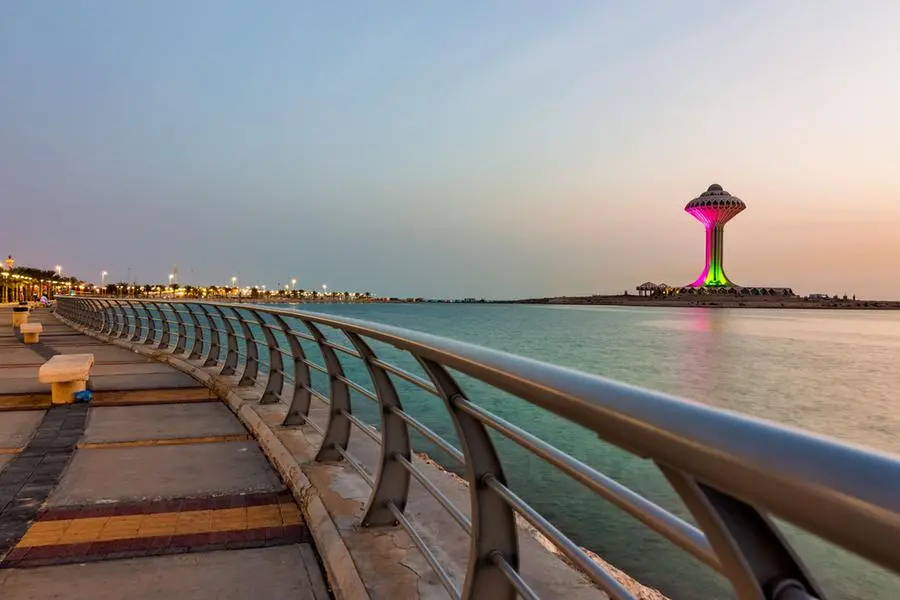PHOTO
Orcas or killer whale sightings, although rare, have been occuring in UAE waters since 2005, in line with the nation's efforts to preserve marine resources.
After the recent spotting of the two killer whales off the capital’s coast, Dr Ada Natoli, Assistant Professor at Zayed University Abu Dhabi, and Founder and Director of the UAE Dolphin Project Initiative, in an interview to Khaleej Times said, “We only have a few sightings per year, or just one, every year and a half. So, I will say they're rare but regular. There have been previous sightings that have been recorded fairly close to the shore.”
Orcas, or killer whales, are the largest of the dolphins and one of the world's most powerful predators.
“We don't know where (how deep into the sea) you’ll find them. They're like a needle in the haystack in the ocean. They're not residents here for sure. They move across various areas of the ocean. So, the likelihood of seeing them is very slim. But sometimes people get lucky and encounter them.”
“But you can see other type of dolphins along the UAE coastline, very close to shore, especially in Abu Dhabi…for example, the Indian Ocean Humpback Dolphins and also the Finless Porpoise. If you go a few kilometres offshore it is also possible to encounter Indo-Pacific bottlenose Dolphins,” said the molecular ecologist, who specialises in conservation genetics of marine species especially marine mammals.
It’s explained they're immediately recognisable by their distinctive black-and-white colouring.
“Thanks to the sightings reported by the public, we managed to identify some killer whale individuals that were already recorded in the UAE waters. They’ve also been recorded in Sri Lanka. So, that gave us a clue that basically these killer whales move throughout the Gulf, all in the northern Indian Ocean up to Sri Lanka. This is the range of habitat that they use. They move around in a vast area of the ocean.”
With diets ranging from fish and penguins to seals, sea lions, and even whales, these predators sit atop the food chain and utilise teeth up to four inches in length.
“They probably make their victims tired - whether they’re playing or not it’s hard to gauge. Also, in other population of killer whales, once they target their prey, they stay with the prey for a long time and then eventually attack it. So, killer whales generally move in pods. These pods can have big numbers or small numbers. In this case, there were only two whales. Generally, the pod is led by a matriarch, a female individual. Here (what was spotted) there was a female and a male one. Male killer whales are bigger and recognisable from their characteristics, bigger and tall straight fin and the females are smaller with the smaller dorsal fin.”
After a pregnancy that lasts 17 months, female orcas give birth to a single offspring, which they nurse for up to two years.
The mothers reproduce every three to ten years. While in most cases, the bond between the mother and juvenile weakens over time and the young orca ventures out on its own, some pods see the juvenile staying with the group it was born into for its entire life.
“We don’t have enough information or data to assess whether this population of killer whales across the Indian Ocean actually exists in big or small numbers. This means we don’t know if they are endangered or not.”
“Their natural habitat is big. We work in collaboration with international experts and initiatives like the Northern Indian Ocean Killer Whales Alliance, which is an initiative that has put together a catalogue of killer whales that occur in the northern Indian Ocean. This is based on sightings reported by whale watching operators or the public or other sources. We are doing a very similar thing in the UAE where we also keep the record and we collect all the information from the public, like in this case,” she said.
What should people do if they spot these orcas?
Shedding light on what should people do when they spot these orcas while at sea, Natoli underlines, “There's never been any human attack recorded in the wild. Obviously, they are big animals, so what I always suggest to the public is, not just whales but even with (small) dolphins, never enter the water. Never swim with these animals because they are much bigger than us, even the small dolphins. One can observe them from a kayak or paddle boat but always refrain from swimming with them. There are international guidelines that provide the public with simple advice on not disturbing these creatures. If you see these animals when you are on a boat, please keep a distance of 50 to 100 metres from the animals. Turn off your engine or slow down. Try not to approach them from the back or from the front, stay on their side instead.
They are pretty curious animals so they will most of the time approach the boat. Usually, the public gets a chance to see them quite closely without disturbing. Us approaching them is quite different from them approaching us.”
Marine ecosystem preservation, rehabilitation high on agenda for UAE
Elucidating on how the UAE has invested in research and development of marine biodiversity restoration and combined scientific research that contribute to the preservation of habitats and species, Natoli says, “So there's been quite a good measure taken by the authorities to improve and protect the marine environment. In the UAE there are a number of marine protected areas. But these protected areas are based on data or information from other species or habitat. That’s because these species of marine mammals (killer whales) utilise a much bigger habitat and geographic range."
“In 2019 with the joint effort of all UAE authorities and scientific data that have been put together throughout the country… along the entire coastline between Abu Dhabi and Dubai water, the area was declared as an important Marine Mammal area. So, this is a great achievement.”
Copyright © 2022 Khaleej Times. All Rights Reserved. Provided by SyndiGate Media Inc. (Syndigate.info).























